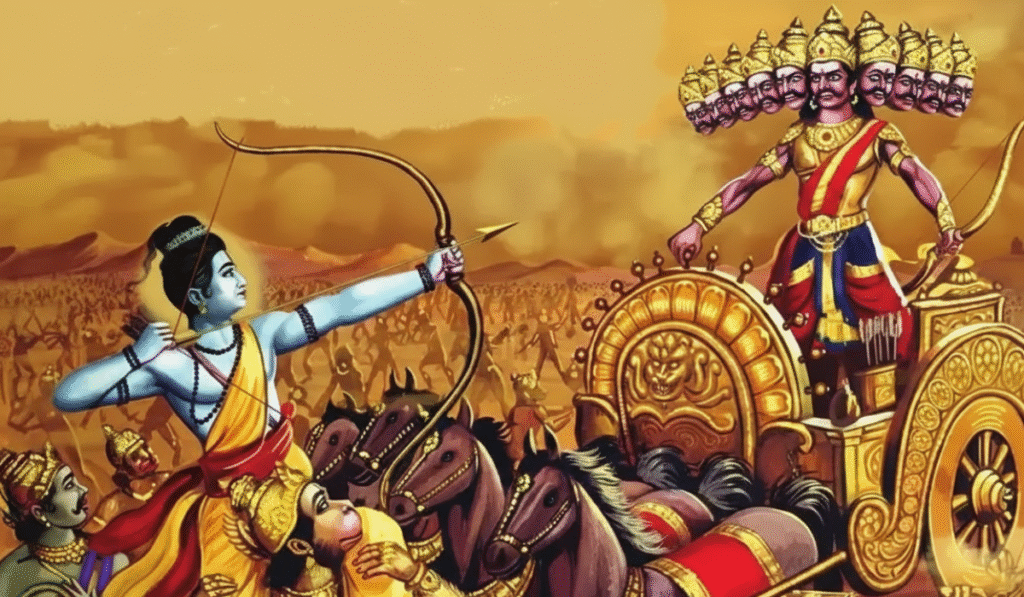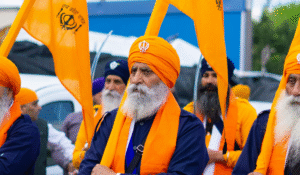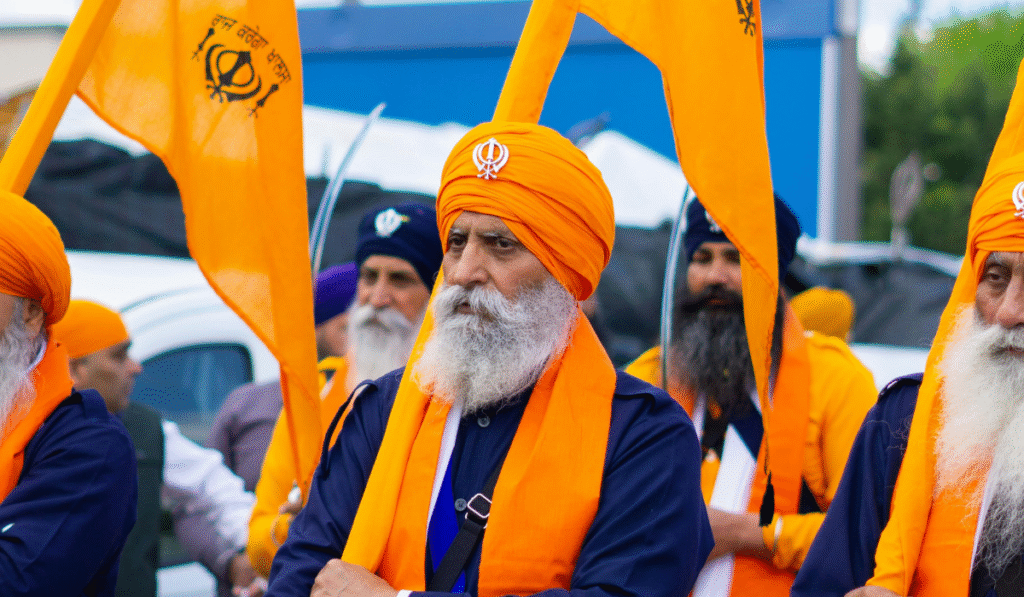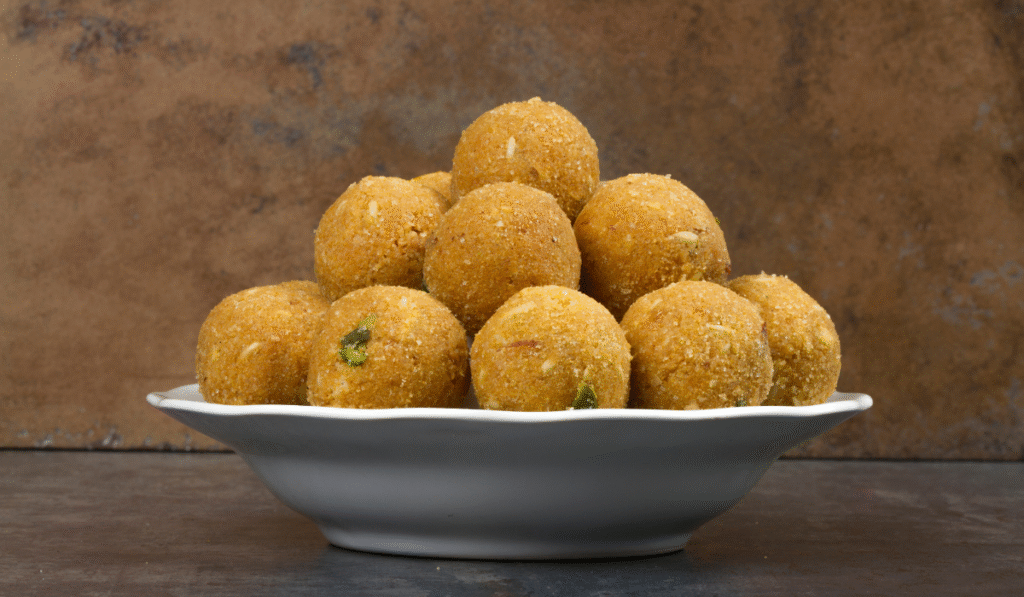Vijaydashami 2025 is not just another Thursday. It’s a day of victory, or as the world knows it, Dussehra. But have you ever wondered why Dussehra is also called Vijayadashami? No, it is not just because of the victory of Ram over Ravan. It’s much deeper and more personal than that.
Vijaydashami significance is not just about burning Ravan or dancing around in Ramleela pandal. It is a celebration steeped deep in the ancient scriptures and rich traditions. So, why is Dussehra called Vijayadashami as well? Let’s dive in.
Key Insights
- Vijayadashami 2025 marks the tenth day of victory, when good triumphs over evil in multiple scriptures.
- From Lord Rama’s victory over Ravana in the Ramayana to Maa Durga’s slaying of Mahishasura in the Devi Mahatmya, each story celebrates righteousness.
- The Pandavas retrieving weapons from the Shami tree on this day reflects readiness, courage, and renewal.
- Spiritually, Vijayadashami signifies rising above the three gunas: tamas, rajas, and sattva, a teaching often highlighted by Sadhguru.
- The festival reminds us that true victory is not just external, but also within: overcoming ignorance, ego, and limitations.
What Does Vijayadashami Mean?
Vijayadashami is a Sanskrit word. Vijaya means victory, and Dashami refers to the tenth day. So, Vijayadashami literally translates to the tenth day of victory. But victory over what, you ask? Well, that’s where the legends get interesting.
Ancient Victories Behind Vijayadashami Significance
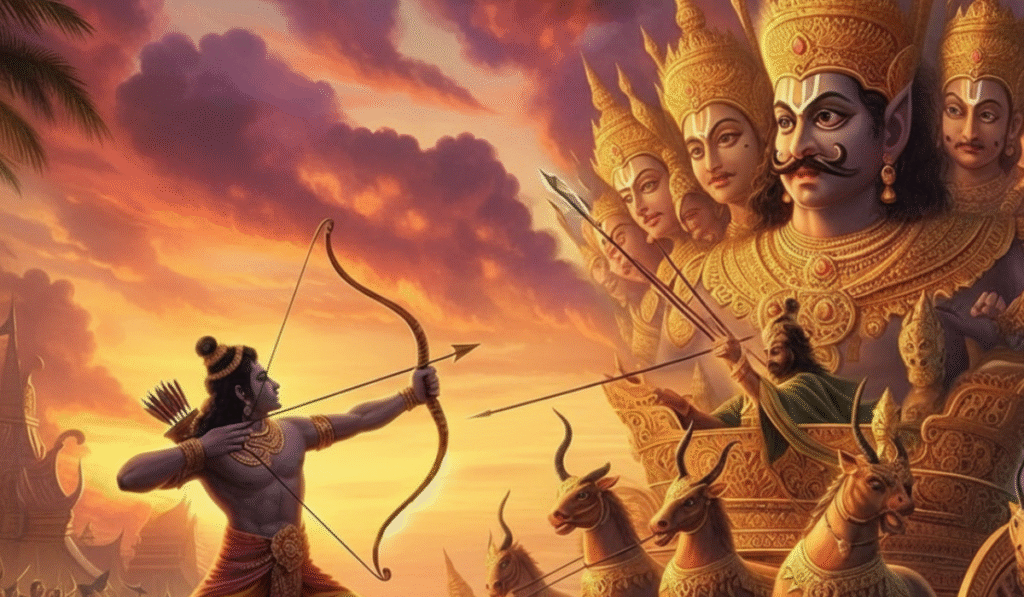
Ramayan
The story of Bhagwaan Ram and Ravan is the most celebrated reason behind Vijayadashami, mostly in northern India. Ravan, the powerful king of Lanka, abducted Sita, triggering a massive war. Bhagwaan Ram, with unwavering courage and devotion to dharma, led an army of monkeys and bears to Lanka to rescue her.
Bhagwaan Ram battled Ravan for nine days, facing intense challenges and fierce opposition. On the tenth day, Vijayadashami, Bhagwaan Ram finally defeated Ravan, ending the reign of evil. This victory symbolizes that no matter how strong evil forces seem, righteousness always prevails.
Note – Bhagwaan Ram claimed victory on the tenth day – Vijaydashami.
Markandeya Purana
The second story comes from the Devi Mahatmya, part of the Markandeya Purana, describing Goddess Durga’s fierce battle with the demon Mahishasura. Mahishasura, a buffalo demon, terrorized the heavens and earth, gaining near invincibility due to a boon given by Brahma that no man could defeat him.
The gods pleaded to Maa Adishakti to manifest Goddess Durga, a divine warrior with ten arms, each holding a powerful weapon. For nine days, Durga fought Mahishasura in a battle that tested her strength, patience, and wisdom. On the tenth day, Vijayadashami, Durga slew Mahishasura, restoring peace and righteousness to the entire universe.
Note – Maa Durga Claimed Victory on the tenth day – Vijaydashami.
Mahabharata
The third legend is from the Mahabharata. Few people know about this, involving the Pandavas during their 12-year exile. Before their exile, they hid their weapons in a Shami tree to keep them safe. On the tenth day, Vijayadashami, they retrieved these weapons, preparing to fight the Kauravas and restore dharma.
This tale is the prime example that highlights strategic planning, courage, and righteousness lead to victory. Even in modern times, worshiping the Shami tree during Vijayadashami reminds us to honor our tools, talents, and resources, using them wisely to overcome challenges. This is why In maharashtra region, many worship their tools and resources.
Note – Beginning of Victory began on the day of Vijayadakshami.
Spiritual Meaning and Blessings Behind Vijayadashami
Vijayadashami is more than the victory of Lord Rama over Ravana or the conclusion of Navratri rituals. It carries a deeper spiritual meaning. The nine days of Navratri represent the journey through the three gunas, or qualities of life: tamas, rajas, and sattva.
- The first three days are devoted to tamas, with fierce forms of the Goddess like Durga and Kali, symbolizing the destruction of ignorance and negativity.
- The next three days focus on rajas, where deities like Lakshmi are worshipped, reflecting action, energy, and prosperity.
- The last three days belong to sattva, dedicated to Saraswati, representing wisdom and inner clarity.
Each guna gives a certain type of strength, but as Sadhguru explains through the Isha Foundation, Vijayadashami is the day when one goes beyond all three. You take part in them but do not get bound by them. That inner victory is the true significance of Vijayadashami 2025.
This day reminds us that real success is not only in defeating outer enemies but also in rising above personal limitations. When we show reverence and gratitude for everything that supports our life, we invite the blessings of Vijayadashami in the form of clarity, strength, and lasting victory.
Conclusion
Vijayadashami isn’t just a festival. It’s a reminder of the eternal battle between good and evil, righteousness and unrighteousness. It’s a day to reflect, rejuvenate, and rejoice. So, as you celebrate this Vijayadashami, remember the ancient tales, embrace the rituals, and carry forward the spirit of victory and virtue.
Let’s stay connected! Come say hi on Instagram or follow us on Facebook for daily inspo.






